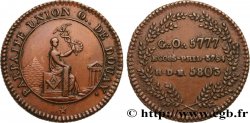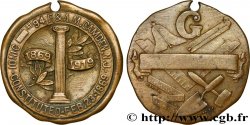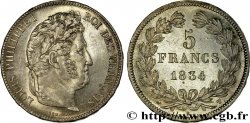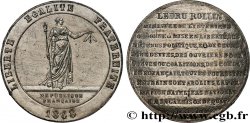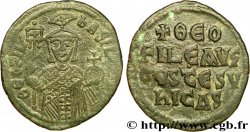Live auction - fme_635274 - FRANC-MAÇONNERIE - PARIS Médaille, La concorde, Orient de Sens, Bicentenaire
Sie müssen angeschlossen sein und von cgb.fr genehmigt werden, um in einer E-Auktion teilzunehmen.Melden Sie sich an, um zu wetten..Die Kontobestätigungen sind innerhalb von 48 Stunden nach Ihrer Anmeldung gemacht.Warten Sie nicht bis die letzten zwei Tage vor dem Abschluss eines Verkaufs, um Ihre Registrierung abzuschließen. Klickend "BIETEN" verpflichten Sie sich vertraglich, diesen Artikel zu kaufen und Sie nehmen ohne Reserve die allgemeinen Verkaufsbedingungen für den live auctions zu cgb.fr an.
Der Verkauf wird an der Zeit auf der Übersichtsseite angezeigt geschlossen werden. Angebote, die nach der Schließung Zeit empfangen sind, werden nicht gültig.
Bitte beachten Sie, dass die Fristen für die Einreichung Ihres Angebots auf unsere Server können variieren und es kann zur Ablehnung Ihres Angebots entstehen, wenn es in den letzten Sekunden des Verkaufs gesendet wird. Die Angebote sollen mit ganzer Zahl ausgeführt sein, Sie können Kommas oder des Punktes in Ihrem Angebot nicht erfassen. Bei Fragen klicken Sie hier, um einen Blick auf die FAQ Live-Auktionen.
Alle Gewinngebote unterliegen einem Aufschlag von 18 % für Verkaufskosten.
Alle Gewinngebote unterliegen einem Aufschlag von 18 % für Verkaufskosten.
| Schätzung : | 150 € |
| Preis : | 75 € |
| Höchstgebot : | 75 € |
| Verkaufsende : | 27 April 2021 19:01:38 |
| Bieter : | 1 Bieter |
Type : Médaille, La concorde, Orient de Sens, Bicentenaire
Datum: 1977
Name der Münzstätte / Stadt : 89 - Sens
Metall : Bronze
Durchmesser : 56 mm
Stempelstellung : 12 h.
Gewicht : 62,21 g.
Rand lisse + 3.7.77 + CY 097
Kommentare zum Erhaltungszustand:
Patine hétérogène. Quelques traces de manipulation
N° im Nachschlagewerk :
Vorderseite
Titulatur der Vorderseite LA CONCORDE / OR:. / DE SENS / 5777 (TRIANGLE) 5977 / G:. O:. D:. F:..
Beschreibung Vorderseite Légende en 5 lignes au dessus de branches de chêne et aubépine.
Rückseite
Titulatur der Rückseite DEUX SIECLES DE RECOMPENSE DU TRAVAIL.
Beschreibung Rückseite G dans un triangle rayonnant.
Kommentare
La médaille est vendue dans une boîte plastique bleue et est accompagnée d’un carton d’adhérent n°3.7.97 avec les signatures de divers membres dans le secrétaire.
Nous avons grâce à l’ouvrage de Marc Labouret que cette loge fut établie par le Grand Orient en 1777 mais que ses travaux s’interrompirent avant 1789 et ne reprirent qu’en 1808. La loge semble toujours exister.
La franc-maçonnerie s’implante en France aux alentours du premier quart du XVIIIe s. sous l’influence d’aristocrates anglais. Initiatique, elle est fondée sur le rite hiramique, du nom d’Hiram de Tyr, personnage biblique, architecte du roi Salomon sur le chantier du Temple et qui a résisté à la torture sans livrer ses secrets. Hiram a aussi donné un point de départ du calendrier maçonnique commençant 4000 ans avant le calendrier chrétien. Les symboles servent de signes de reconnaissance entre les initiés, notamment des outils de constructeur de cathédrales (équerre, compas, niveau, maillet, etc.), des formes (triangle, étoile), des nombres (trois, cinq, sept) et des lettres.
The medal is sold in a blue plastic box and is accompanied by a membership card n°3.7.97 with the signatures of various members in the secretary. We have thanks to the work of Marc Labouret that this lodge was established by the Grand Orient in 1777 but that its work was interrupted before 1789 and did not resume until 1808. The lodge still seems to exist. Freemasonry was established in France around the first quarter of the 18th century under the influence of English aristocrats. Initiatory, it is based on the Hiramic rite, named after Hiram of Tyre, a biblical character, architect of King Solomon on the construction site of the Temple and who resisted torture without revealing his secrets. Hiram also gave a starting point for the Masonic calendar beginning 4000 years before the Christian calendar. Symbols serve as signs of recognition between initiates, including cathedral builder's tools (square, compass, level, mallet, etc.), shapes (triangle, star), numbers (three, five, seven) and letters
Nous avons grâce à l’ouvrage de Marc Labouret que cette loge fut établie par le Grand Orient en 1777 mais que ses travaux s’interrompirent avant 1789 et ne reprirent qu’en 1808. La loge semble toujours exister.
La franc-maçonnerie s’implante en France aux alentours du premier quart du XVIIIe s. sous l’influence d’aristocrates anglais. Initiatique, elle est fondée sur le rite hiramique, du nom d’Hiram de Tyr, personnage biblique, architecte du roi Salomon sur le chantier du Temple et qui a résisté à la torture sans livrer ses secrets. Hiram a aussi donné un point de départ du calendrier maçonnique commençant 4000 ans avant le calendrier chrétien. Les symboles servent de signes de reconnaissance entre les initiés, notamment des outils de constructeur de cathédrales (équerre, compas, niveau, maillet, etc.), des formes (triangle, étoile), des nombres (trois, cinq, sept) et des lettres.
The medal is sold in a blue plastic box and is accompanied by a membership card n°3.7.97 with the signatures of various members in the secretary. We have thanks to the work of Marc Labouret that this lodge was established by the Grand Orient in 1777 but that its work was interrupted before 1789 and did not resume until 1808. The lodge still seems to exist. Freemasonry was established in France around the first quarter of the 18th century under the influence of English aristocrats. Initiatory, it is based on the Hiramic rite, named after Hiram of Tyre, a biblical character, architect of King Solomon on the construction site of the Temple and who resisted torture without revealing his secrets. Hiram also gave a starting point for the Masonic calendar beginning 4000 years before the Christian calendar. Symbols serve as signs of recognition between initiates, including cathedral builder's tools (square, compass, level, mallet, etc.), shapes (triangle, star), numbers (three, five, seven) and letters







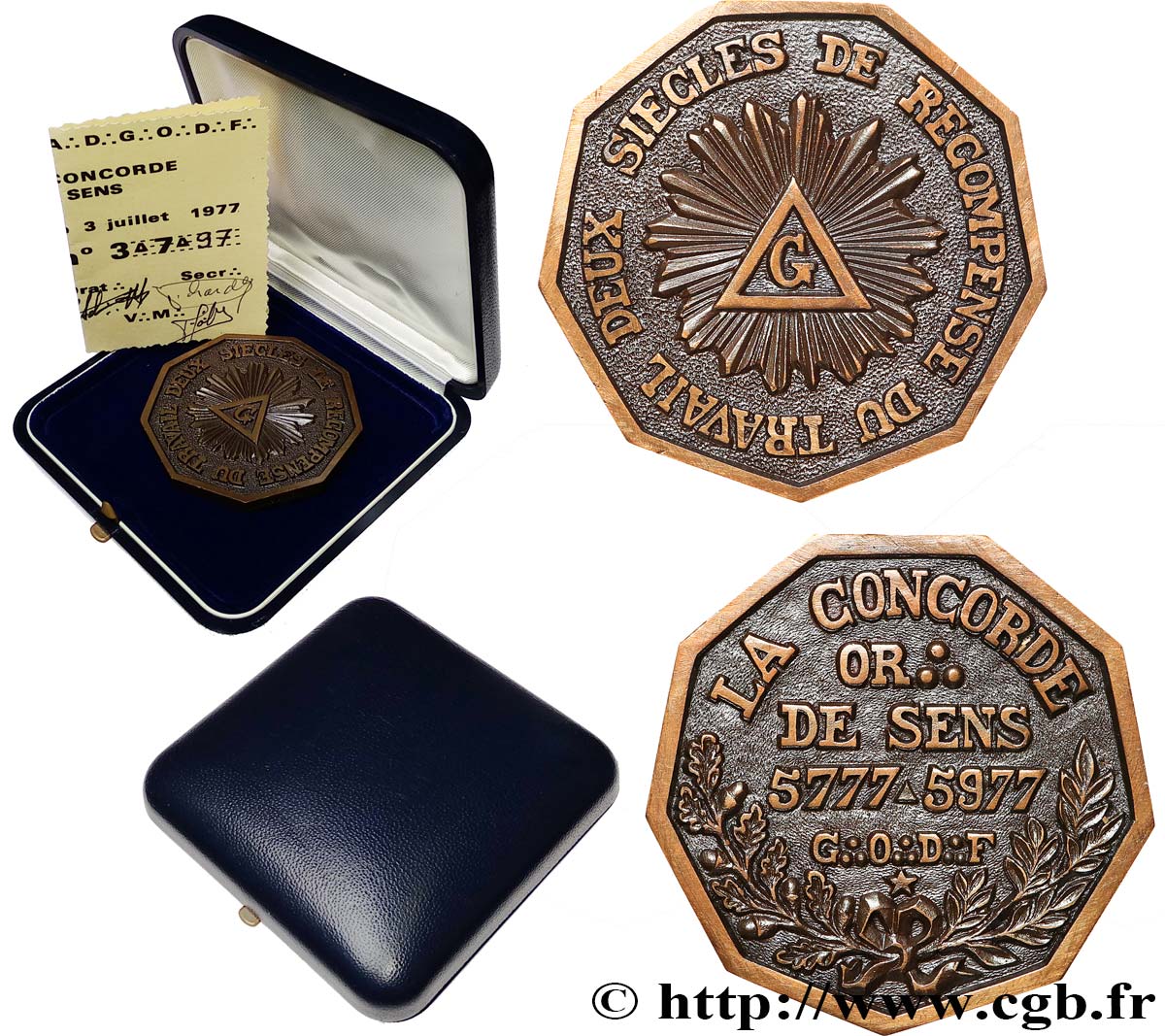
 Berichten über einen Fehler
Berichten über einen Fehler Die Seite drucken
Die Seite drucken Teilen meiner Auswahl
Teilen meiner Auswahl Stellen Sie eine Frage
Stellen Sie eine Frage Einlieferung/Verkauf
Einlieferung/Verkauf
 Details
Details